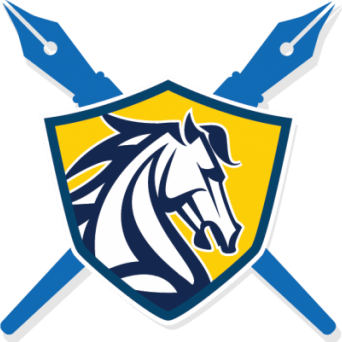Orthokeratology lenses as a small celebration of the Asian-American Community
By Sydney Nguyen (’20) and Jessica Zhong (’20)
“Isn’t it bad to wear contacts at night?”
“Wait, so how can you see during the day?”
“There’s nothing in your eyes right now?”
“They’re hard plastic?”
No matter the question, any attempt to explain these rigid plastic contact lenses is met with blank stares (20/20 vision or not). Chances are, if you’re Asian American, you’ve heard of it. Orthokeratology lenses, more affectionately dubbed Ortho-K, have forever reshaped the topography of the Asian American community. Worn at night, these rigid plastic contact lenses are removed and stored in the morning, allowing their owner to go about their day uninhibited by contacts. Why is this innovative system, prided for its prevention of further eyesight regression, still in the shadows of mainstream eyecare while flourishing among young Asian-Americans?
It probably has something to do with the concept of prevention, a darling of Asian parents. Ask around, and people’s reasons for starting Ortho-K are usually around preventing further eyesight regression – Asian parents, with their predilection for foresight, are willing to jump onto this medical innovation in an effort to slow the blur. It’s a tale as old as time (or perhaps only 60 years old, since the advent of Ortho-K lenses) – a glasses-wearing pre-(or sometimes post)tween, sometimes still sporting the iconic Asian bowl cut, is ushered into the optometrist’s domain. They peer into various imaging machines and watch the little hot air balloon float in and out of focus, get assaulted by puffs of air blown directly at the delicate cornea, and widen their eyes for a topographical map. At the end, they can trade the burden of glass lenses for the lightness of rigid plastic contacts, and with them, the peace of mind of prevention and the freedom of the naked eye.
Ok, so if Ortho-K lenses are so great, why doesn’t everyone use them? For some reason, whenever the innovative discs are mentioned, only the Asians in the room have heard of them. Everyone else seems blindly unaware.
It takes only a simple examination of the Ortho-K family tree to find out why. A journey through the short hallway of Cary Family Eye Care (or your local Ortho-K provider) reveals the framed portraits of the Family’s latest members: a boy from Chinese school, a girl from the neighborhood swim team, a classmate from Kumon. The lineage of the famed cure for nearsightedness can be traced along their smiling faces, or through the direct message chats on any auntie’s WeChat. Spread primarily by word of mouth, Ortho-K unites a hidden community revealed only in snippets of excited conversation at the H-Mart food court or in whispers during orchestra rehearsal. Just as we keep track of extensive lineages back in the motherland, so too can we trace back our Ortho-K heritage. Everyone knows the person who converted them, and they remember the family who converted them, on and on until, ostensibly, the very first visionary.
The system is not without its downfalls, however.
At school, it’s not uncommon to see a fellow Ortho-K user blinking slowly and deliberately throughout the day, a telltale sign of the rigid lenses nestled safely, but uncomfortably, on an unmolded cornea. Though they are meant to be worn at night, the all-nighters sometimes required by CA’s academic rigor prevents users from correcting their vision in their sleep, forcing them to wear the lenses throughout the day. It’s a chaotic type of resourcefulness that forces the Ortho-K user to resort to daytime use of the lenses, but sometimes the strain on our lives – pressures of college applications, schoolwork, Kumon, juggling two cultures while trying to maintain the expectations of both our parents and our peers (but this is another article to be written…) – requires these last resorts.
Forget choosing the perfect outfit to take on a day at school; the more pressing question has become deciding how important it is to see the next day. The lenses must sit for six hours to complete their job, a normally feasible guideline – until students find themselves still staring at a bright blue screen at two or three in the morning. As they trudge off to bed (though not rubbing their eyes out of habit for fear of displacing the precious lenses), the only question racing through their minds is whether they truly have to see that test they’re about to take in just a few hours, or if squinting at the OneNote projected on the TV is a fair price to pay for the bliss of torpor. Weighing the two minutes it takes to carefully insert each lens against two more minutes of blessed sleep is no easy choice – a conundrum magnified all the more with its unsightly consequences for the following day.
Right now, in a world increasingly blinded by hatred towards the Asian-American community, we choose to look past the incertitude and strangeness of our times with a vision of optimism. The same extensive networks that notified each other of the existence of these lenses now step up to support each other, whether the distance between is 6 feet or an ocean. Those WeChat group chats now disseminate carefully translated information to our aunties to allay their panic from sketchy sources they may find online. Alcohol swabs previously used to disinfect lens paraphernalia are now passed around to disinfect friends’ and families’ devices and accoutrements. It’s difficult to say that this pandemic has strengthened our communities, or unlocked some “potential” to be conscientious humans, but the least that can be said is that the Asian-American community is still here, and still strong, just as we have been time and time again. In this age, let’s try to see our circumstances through a new lens, even if the future is not always clear.
Photo courtesy of Cary Family Eye Care.

